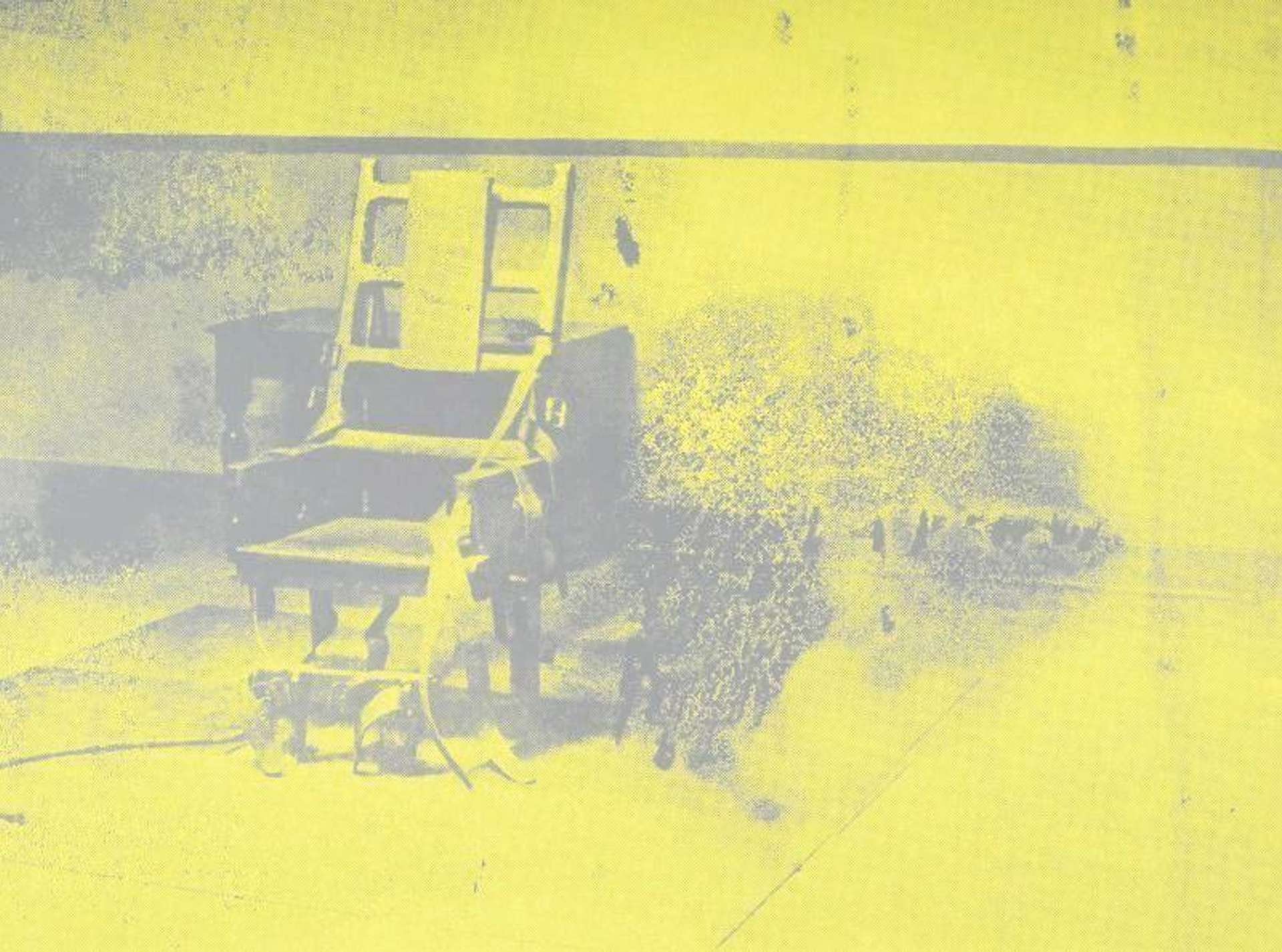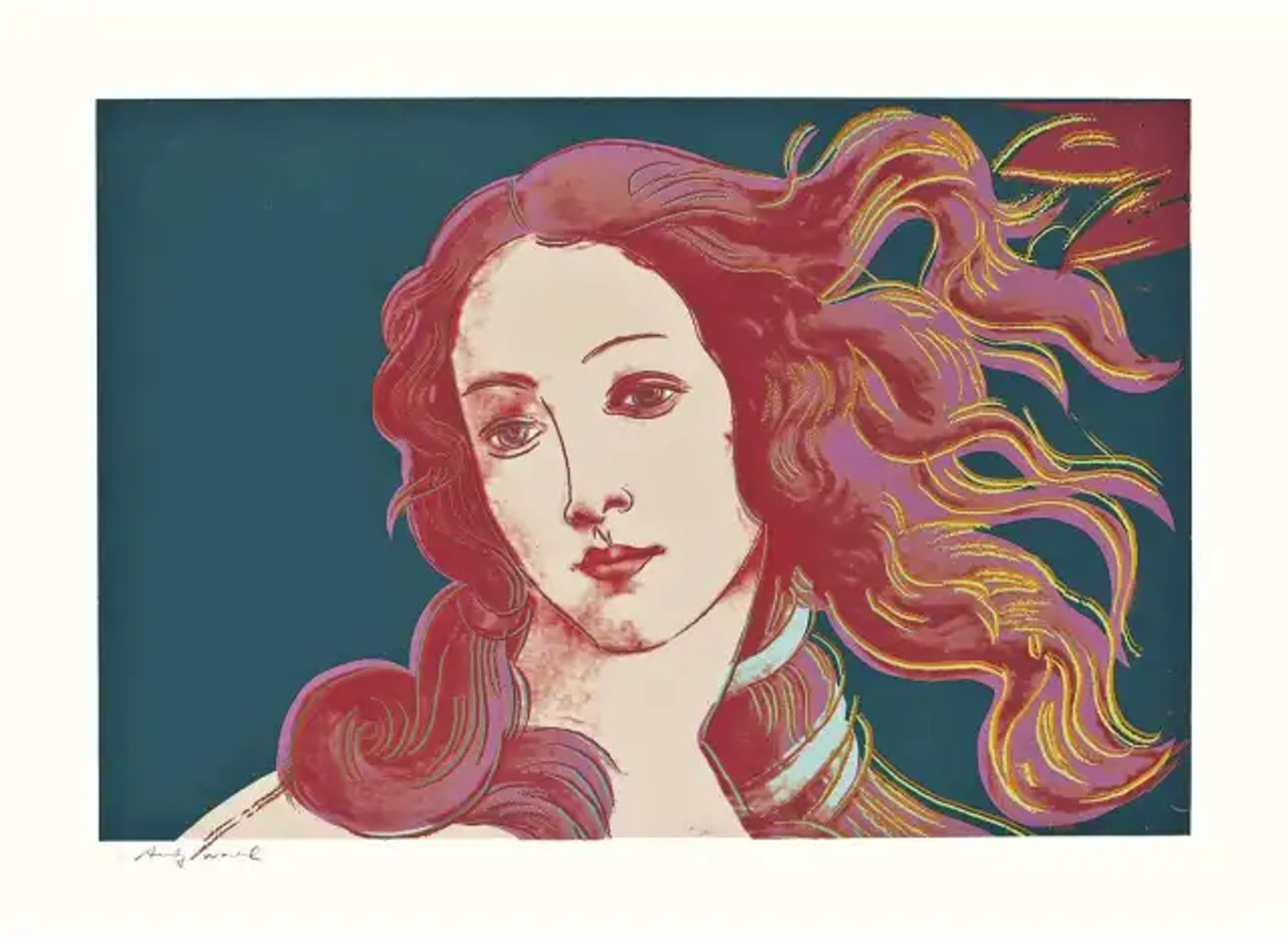Artificial Andy: Warhol in the Age of Technology

 Image © Youtube / The Andy Warhol Robot 1982
Image © Youtube / The Andy Warhol Robot 1982
Interested in buying or selling
Andy Warhol?

Andy Warhol
487 works
While many adjectives have been used to describe Andy Warhol’s art, mechanical is often at the top of the list, just as he would have wished. A visionary who transcended the boundaries of his time, particularly when it came to technology, Warhol's legacy continues to pulsate through the veins of contemporary culture. From the groundbreaking Andy Warhol Robot of 1981 – a testament to his flirtation with mechanical innovation – to the digital resurrection of his voice through AI in the Netflix series The Andy Warhol Diaries, these high-tech advancements echo Warhol's genius and amplify his prescient insights into fame and media.
Inside The Factory: The Industrial Production of Art
Warhol’s legendary studio, nicknamed The Factory, had a fascinating dynamic and played a significant role in revolutionising the production of art, transforming the concept of art creation into something akin to an industrial process and challenging traditional notions of artistry and authorship. The Factory occupied a series of lofts in New York and was more than just a studio, it was a radical reimagining of the art production space. Its name was a direct nod to its function: a place where art was produced en masse, much like goods in an industrial factory. This was at the heart of The Factory's ethos, and Warhol famously used silk-screening techniques – which allowed him to produce large quantities of his iconic works like the Campbell's Soup Cans and Marilyn Monroe portraits. This method paralleled industrial manufacturing processes, where repetition and quantity were key.
Warhol's approach at The Factory also blurred the lines between art and commerce. He was unapologetic about the commercial aspects of his work, viewing art as a commodity. This perspective was a significant shift from the existing art world's view, which often held a romanticised notion of creating art for art's sake. The Factory was renowned for its collaborative environment, as artists, musicians, actors and other creatives constantly moved in and out, contributing to Warhol's works directly or indirectly. This communal approach was a stark departure from the traditional, solitary artist archetype and lent an assembly-line quality to the artwork produced there.
“15 Minutes of Fame”: Warhol's Prescient Adage in the Age of Social Media and Instant Fame
Few instances illustrate Warhol's understanding of future technology as his famous prediction of fame in today's digital and social media-driven world. His concept of fleeting and instant celebrity has become a defining characteristic of contemporary culture, especially in the context of social media and online notoriety. His famous “15 minutes of fame” adage, spoken decades ago, was a prophetic insight: his vision suggested a world where fame would be transient; accessible to all, yet lasting only a brief moment. The advent of social media platforms like Instagram, TikTok and YouTube has made Warhol's prediction more relevant than ever. Today, individuals can achieve rapid and widespread recognition – often overnight – through viral content. This type of fame is often short-lived, aligning precisely with Warhol's 15 minutes, and his quote anticipated a democratisation of fame and celebrity.
The adage also speaks to the impact of this transient fame on culture and individual identity. In a world where fame is both highly sought after and fleeting, there are implications for how individuals perceive success, self-worth and identity, often tying them to the recognition received on social media platforms. Warhol's foresight into the nature of fame underlines his legacy as an artist who was deeply in tune with the cultural and societal undercurrents. His quote has entered popular culture, illustrating how much Warhol's understanding of the fleeting nature of fame remains a poignant commentary on the contemporary landscape of celebrity and recognition.
 Image © Youtube / The Andy Warhol Robot
Image © Youtube / The Andy Warhol RobotWarhol Ex Machina: The Andy Warhol Robot as a Self Portrait
In 1981, Warhol collaborated with engineers and robotics experts to create this mechanical doppelgänger. The Andy Warhol Robot was conceived as part of his exploration into the realm of technology and its potential in the art world, illustrating his continual push to redefine the boundaries of artistic expression. This robotic creation was intended to be a technological self-portrait, was designed to emulate Warhol's appearance and mannerisms and serve as an extension of his artistic persona. His interest in creating the robot can be viewed as further expression of his lifelong preoccupation with replication and mass production, themes that pervaded his work. The robot was a physical manifestation of these, embodying Warhol's idea of duplicating not just images, but his own identity.
Unlike traditional self-portraits that capture the artist's physical or emotional state at a moment in time, Warhol's robot represented a radical rethinking of this genre. It was a self-portrait that could interact with the world, blurring the distinction between the creator and the creation and between art and life. The robot was a testament to Warhol's avant-garde approach to art, demonstrating his willingness to embrace new technologies and his foresight into the growing importance of automation and artificial intelligence in society. The robot also reflected Warhol's ongoing commentary on the mechanisation of the human experience.
While the robot was a technical marvel of its time, it was never fully completed or exhibited, so its broader impact lies in its conceptual significance. The robot posed questions about authenticity and originality—central themes in Warhol's work—and about the intersection of human creativity with technological advancement. Warhol's robot can be seen as a precursor to contemporary explorations of AI and robotics in art, setting a precedent and inspiring future generations of artists to experiment with the potential of machines in the realm of artistic creation. As a technological self-portrait, it encapsulated Warhol's innovative spirit and his insightful commentary on the society of his time — a commentary that continues to resonate in the digital age.
 Image © Netflix / The Andy Warhol Diaries
Image © Netflix / The Andy Warhol DiariesInnovation in Storytelling: Using AI to Bring Warhol's Voice to Life on Netflix's The Andy Warhol Diaries
Warhol was a part of a groundbreaking use of artificial intelligence when his voice was recreated for the Netflix documentary series The Andy Warhol Diaries. This technological feat represents a significant advancement in storytelling, one that also aligns with Warhol's own artistic ethos, especially considering his experimentation with the Robot as a form of mechanised self-portraiture. The series, which explores Warhol's life and work, employs AI technology to synthesise his voice, creating a narration that is immersive and authentic. This innovative approach allows the series to present Warhol's diaries in a first-person narrative, providing an intimate perspective on the artist's thoughts and experiences.
Crucial to this endeavour was the explicit support from the Andy Warhol Estate. This endorsement is a recognition of the project's alignment with Warhol's own artistic practices and his interest in technology and reproduction. By employing AI to recreate Warhol's voice, the creators of The Diaries are continuing his legacy of mechanisation, a testament to Warhol's forward-thinking vision that anticipated the fusion of technology and human identity. The use of AI in the series also raises intriguing ethical and artistic questions, opening up discussions about the role of technology in historical representation. The AI-rendered voice of Warhol has a profound impact on viewers, offering a more engaging and authentic connection to the artist.
The Convergence of Art, Technology and Vision: Warhol's Lasting Influence
It is evident that Warhol's impact extends far beyond the colourful pop art canvases for which he is best known. A visionary artist and cultural icon, he foresaw and influenced the merging of art with technology, a phenomenon that continues to shape the contemporary art landscape. His work, characterised by its embrace of popular culture and mass production, challenged the traditional boundaries of art. His foresight into the role of technology in art, as exemplified by the creation of the Andy Warhol Robot and the posthumous use of AI to recreate his voice in The Andy Warhol Diaries, positioned him not just as an artist but as a pioneer at the forefront of the digital revolution in art. The endorsement of these technological endeavours by the Andy Warhol Estate further solidifies Warhol’s status as a trailblazer in the fusion of art and technology. This support reflects a deep understanding of Warhol's artistic ethos and an acknowledgment of his lifelong fascination with replicating and mechanising human identity. Warhol's famous adage of fifteen minutes of fame has found a new resonance in the age of social media and instant fame, underscoring his acute perception of the ephemeral nature of celebrity and fame, a concept that has become a defining characteristic of the digital era.
Moreover, Warhol’s artistic practices, particularly his approach to mass-producing art at The Factory, presaged current discussions about the democratisation of art and the role of the artist in society. His work blurs the lines between art and commercialism, between creator and creation, inviting ongoing discourse on the nature of art and authenticity. Warhol’s exploration of art and technology was not merely a phase or a series of experiments; it was a profound commentary on the evolving relationship between human creativity and technological advancement. Warhol’s legacy, therefore, is not confined to his iconic artworks but is also ingrained in his ability to envision and shape the future dialogue between art, technology and culture. His influence continues to resonate, inspiring new generations of artists and thinkers to explore and redefine the boundaries of creative expression in the digital age.






